Anitha Guha’s ‘Reward of the Seven Hills’ had drama, tempo, and well-choreographed patterns
Anitha Guha’s ‘Reward of the Seven Hills’ had drama, tempo, and well-choreographed patterns
Hardly ever will you go ‘ah’ in a themed Bharatanatyam manufacturing, however Anitha Guha’s ‘Reward of the Seven Hills’ on Lord Venkateshwara made you respect her talent and information. Because the efficiency was primarily based on devotional shlokas and songs written by Sri Muralidhara Swamigal, she constructed on the descriptive lyrics and the gorgeous melody to create a energetic Bharatanatyam-theatre present.
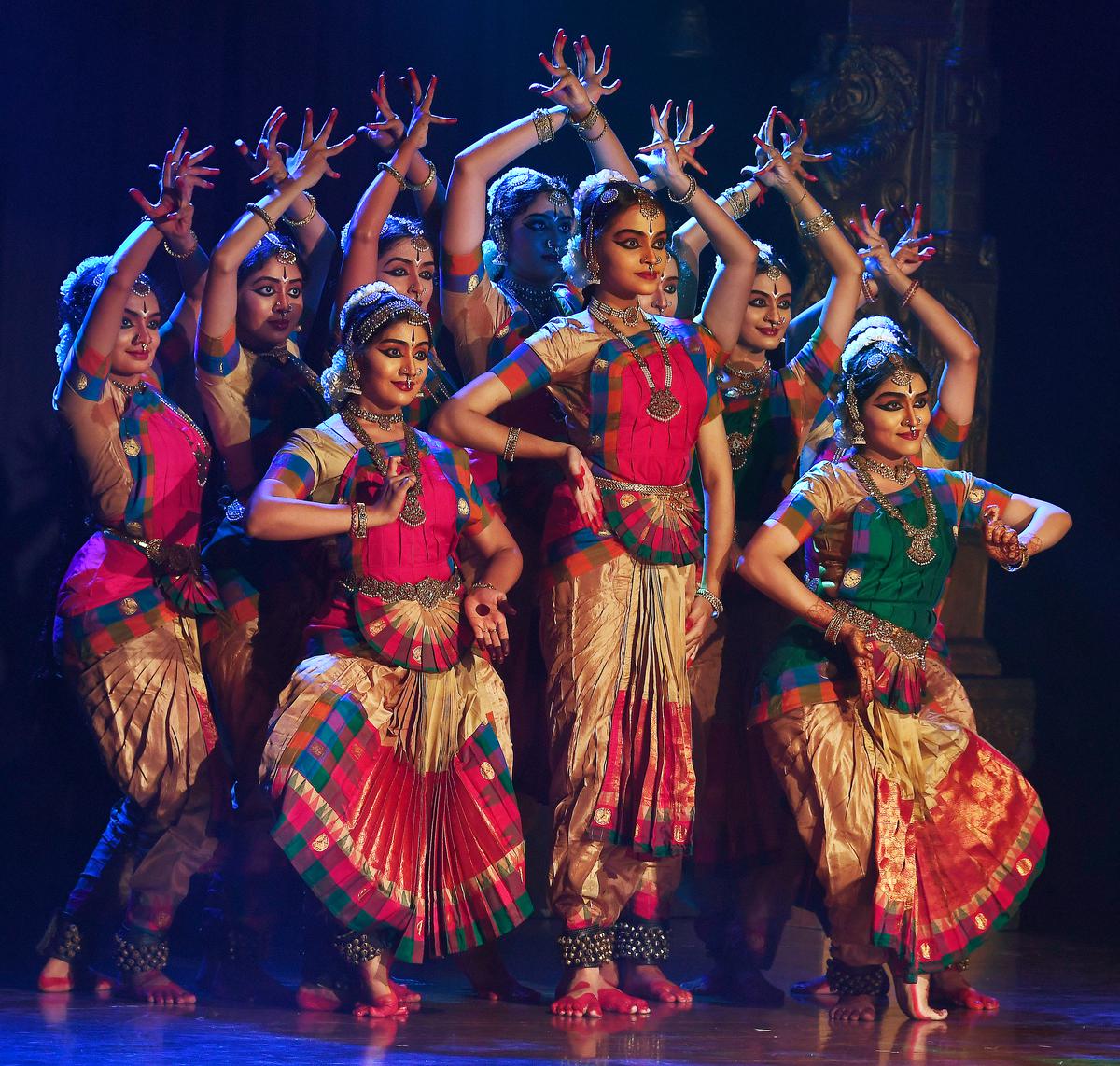
College students of Bharathanjali presenting ‘Reward of Seven Hills’
| Photograph Credit score: SRINIVASAN KV
Anitha layered the songs with musical inputs and jathis with the assistance of P.R. Venkatasubramanian. One may sense Anitha’s dexterity, as she mixed compositions, introduced in teams of dancers and extra entries and exits, whereas retaining the tempo intact. All this she achieved via a flawless efficiency by 32 of her college students at Bharathanjali.
It premiered on-line in the course of the pandemic for the World Organisation for Divinity’s fundraiser ‘Rise of Marghazi’ II Sequence, and was staged dwell for the primary time not too long ago in Chennai.
Credit for the manufacturing ought to go to Sriranjani Santhanagopalan and Vignesh Eashwar (vocal), an knowledgeable band of musicians, Revathi Sankkaran (anchor) and senior disciples equivalent to Smriti Sudhakar, Madhavi Prakash, Sanjana Narayanan, Nutana Nair, Sandhya Shankar, Anjali Hariharan, Ravali, Sandhya, Varsha, amongst others.
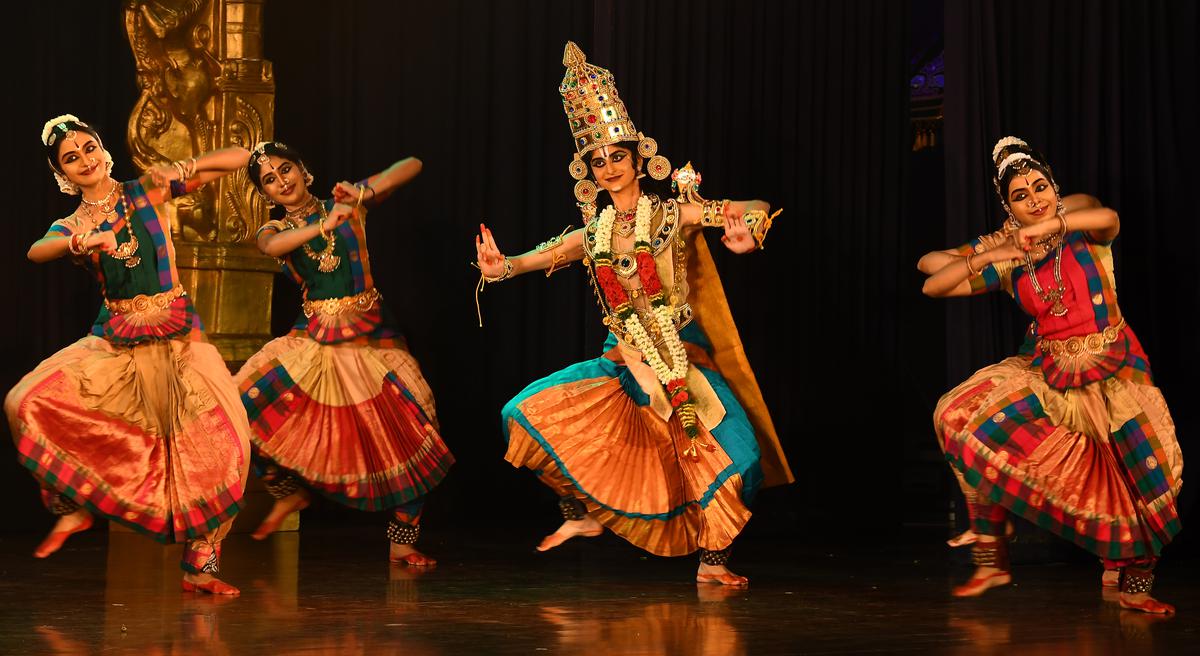
From Bharathanjali’s thematic dance manufacturing, ‘Reward of the Seven Hills’.
| Photograph Credit score: SRINIVASAN KV
Anitha emphasises precision in jathis, formations, actions, entries, and exits. Her type being unabashedly dramatic, the keenness within the nritta segments can seem exaggerated. Was it the addition of the synthesiser, one was undecided. Decreasing the quantity in recording would assist scale back the aggressive overtone.
Fascinating sollus
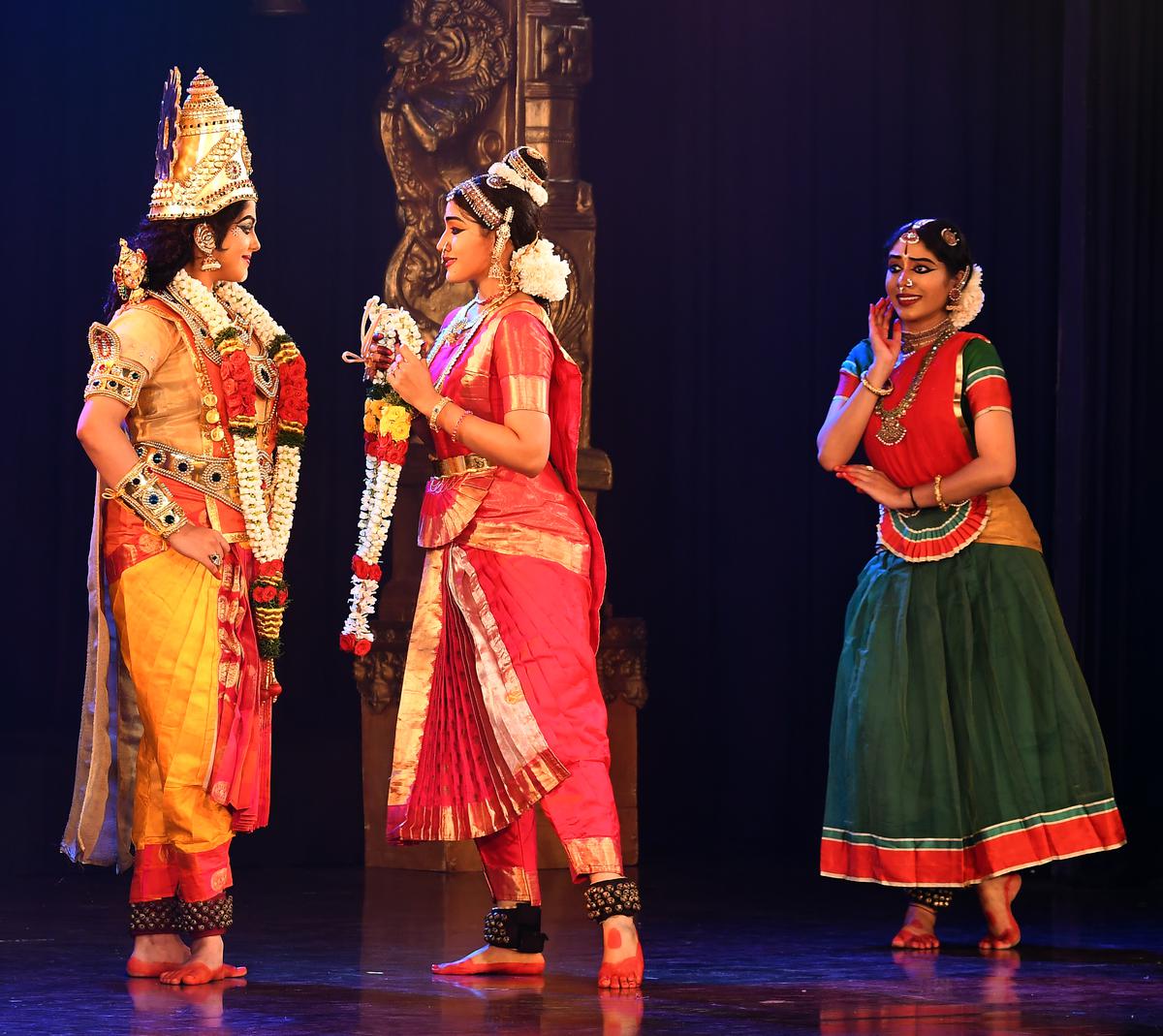
College students of Anitha Guha performing ‘Reward of the Seven Hills’, a dance drama primarily based on the shlokas and songs written by Muralidhara Swamigal.
| Photograph Credit score: SRINIVASAN KV
The primary was merely one of the best: ‘Srinivasa Karavalambam’ (Ragamalika, Mishra Chapu), a poetic shloka that described the fantastic thing about Srinivasa in white and blue. The verses have been interspersed with fascinating sollus, carried out by various teams of dancers in numerous formations, as they wove out and in. The impact was electrical, even ethereal. It’s laborious to grasp the rigour that goes into attaining the split-second timing. From the start, when a gaggle of younger, vivid dancers entered the stage, the environment remained racy, and edgy.
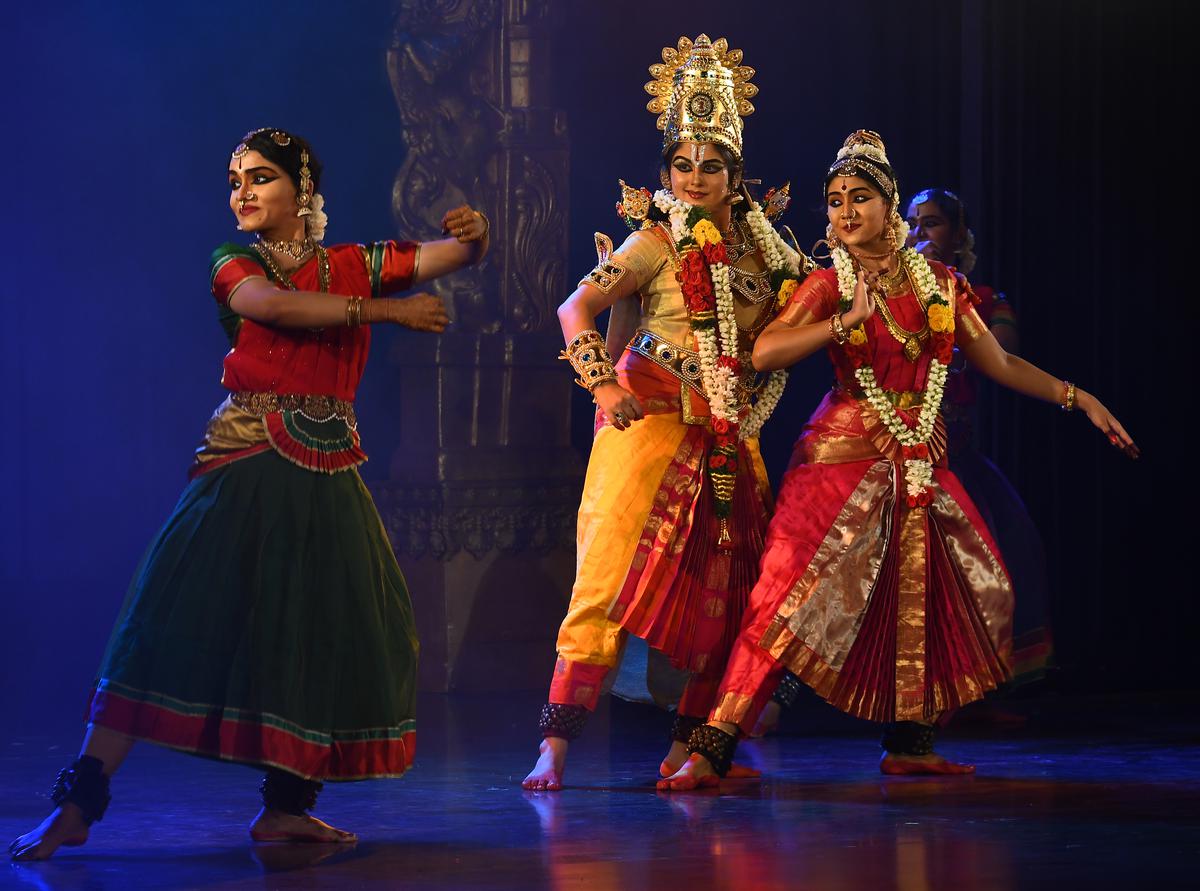
Bharathanjali’s ‘Reward of the Seven Hills’ a dance drama by Anitha Guha.
| Photograph Credit score: SRINIVASAN KV
The following piece was additionally a mixture of two separate happenings within the temple — god’s procession (Mallari) and the celebratory folks dance, each tuned curiously in Gambhira Nattai (Adi). The Mallari introduced in numerous nadais, alternating with the dances, was marked by good timing and synchronisation.
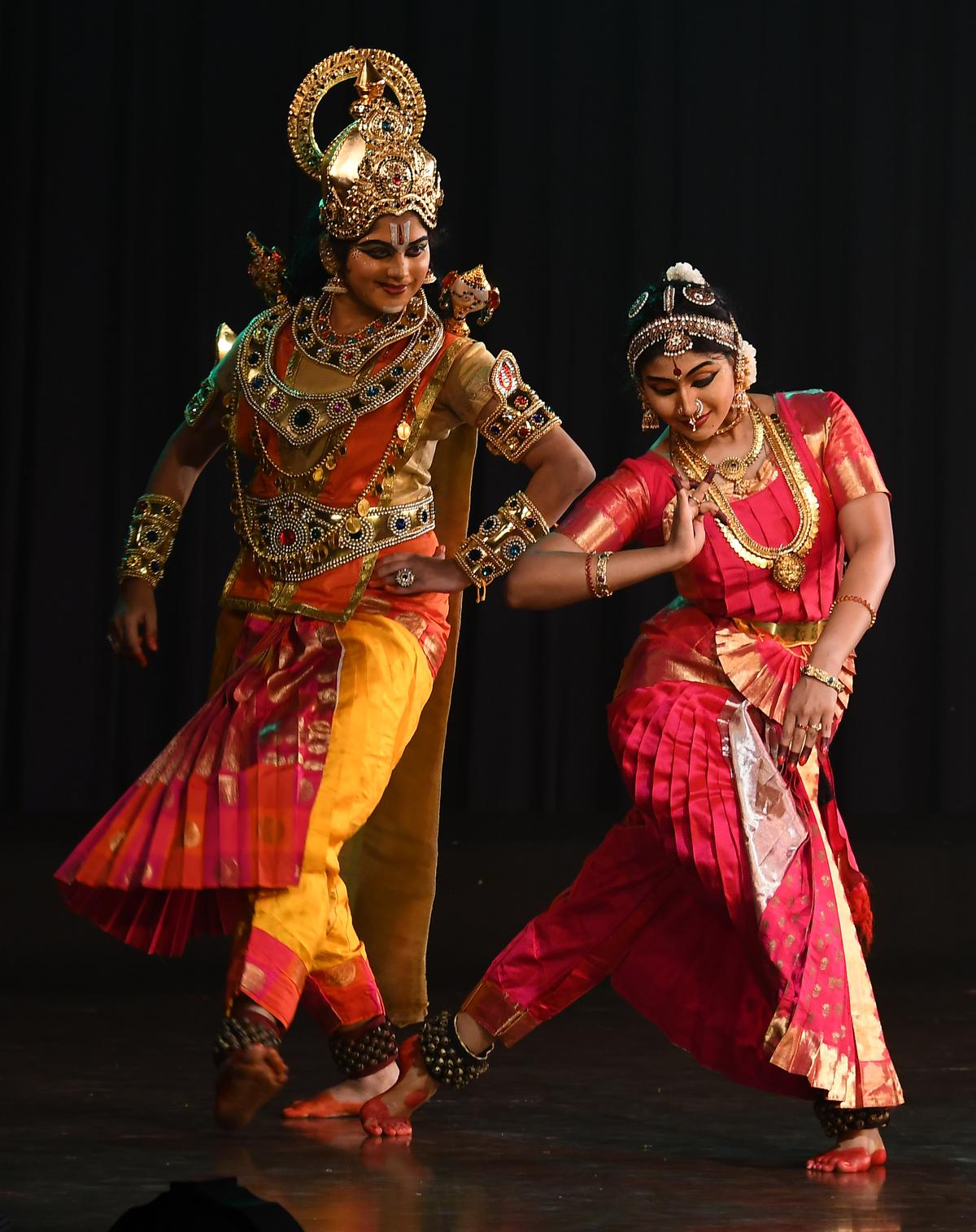
‘Reward of the Seven Hills’, a dance drama by the scholars of Anitha Guha.
| Photograph Credit score: SRINIVASAN KV
Anitha’s expertise additionally prolonged to visualisation in ‘Oru nodi en thiruvadi’ (Lathangi, Khanda Chapu) that portrayed a poet (Sneha Vasan), who was dressed like Sri Muralidhara Swamigal, penning a composition concerning the Vamana and Narasimha avataras. There was an ekaharya abhinaya dancer-cum-narrator (Sandhya Shankar), who defined the lyrics, and there have been the dancers, who enacted the avatara scenes. Anitha’s visible layering was clear and self-explanatory.
There was a sudden change of tempo when a padam-like ‘Karanam arindhilene sakhiye’ describing Alamelumanga’s (Smrithi Viswanath) craving to see her lord transitioned into the marriage ceremony in ‘Kannara kaanere’ (Anandabhairavi, Adi). Dramatically and unexpectedly drummers appeared on the scene in the direction of the top of the tune. Sakhis joined in, and the Kalyana Utsavam created a festive atmosphere. There have been many elements to juggle with, and this the choreographer did superbly to maintain the momentum.
With out a narrative, the present held its personal for one and a half hours. It ended with a picturesque delineation of Venkateshwara’s Brahmotsavam in Tirumala, when he’s carried in a procession on a palanquin and vahanas in ‘Bavani varugindran’ (Ragamalika, Talamalika).
The Chennai-based reviewer specialises in classical dance.
